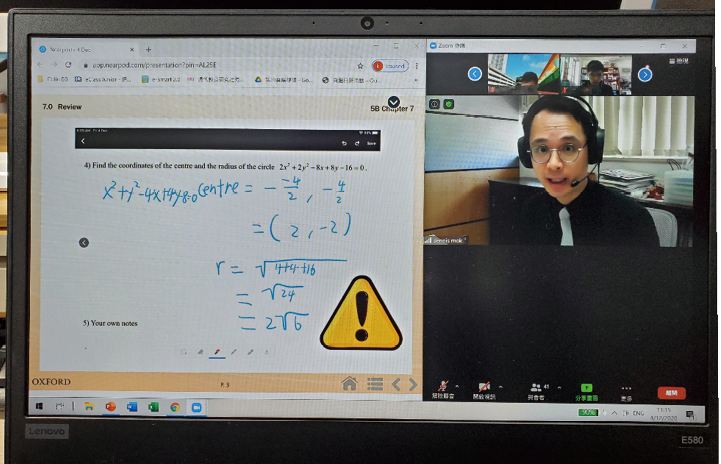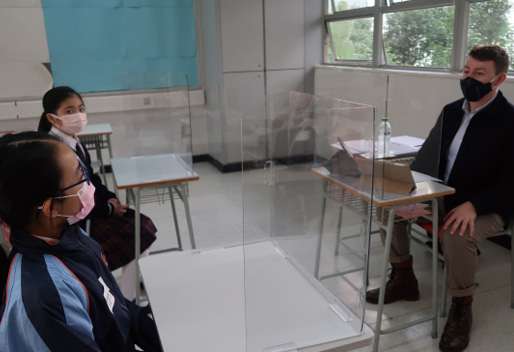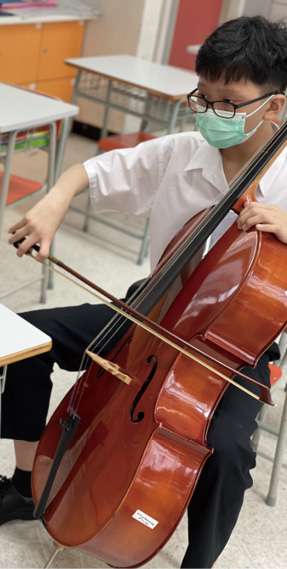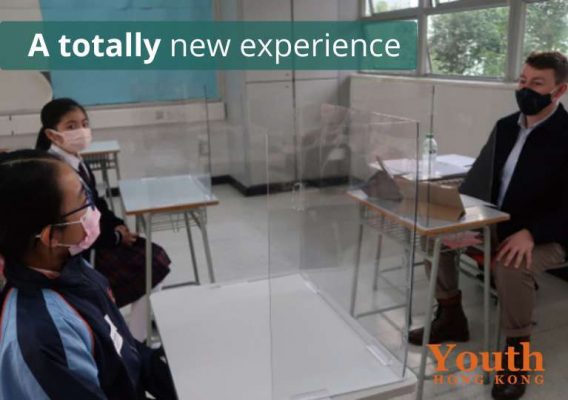//vol.13-3 Insight: secondary school
- Schools had to respond with great urgency to the sudden changes caused by the pandemic.
- Mr Dennis Mok, deputy principal of the HKFYG Lee Shau Kee College, talks about the experimentation that took place.
- He explains the continuous learning curve for teachers, the current hybrid mode and all the challenges caused by change.
- 因應疫情變化,學校需要迅速應變並不斷調整應對策略。
- 香港青年協會李兆基書院莫一帆副校長為我們介紹學校採取的應對措施。
- 他解釋,老師需要不斷學習新技能調整教學方法,目前學校採取混合教學模式,以應對新學年的挑戰。
The school adopted a mixed mode of teaching but face-to-face instruction and online lessons performed in parallel were very challenging. Difficulties were overcome by experimenting, Mr Mok recalls. “In the early days, while everyone was getting used to cameras and mics on computers, online classes tended to flow into one-way teaching but in order to make classes on Zoom efficient, improve student participation and enable students to make instant feedback, teachers had to improvise.”
Online classes tended to flow into one-way teaching and teachers had to improvise.
This process involved a continuous learning curve for educators. “Our learning interface dealt with unprecedented challenges. This was a totally new experience for teachers who had to constantly change their teaching modes depending on the situation: from face-to-face instruction to online lessons and back again.” Some extracurricular activities, such as debates, were moved online. As Mr Mok says, “This was a real test of the teachers’ creativity and adaptability and subjects like physical education were difficult.”

Nobody expected the epidemic to last such a long time and after a few months of class suspensions, Mr Mok says the school realized that important communication with parents had broken down. “We held vital parent-teacher meetings online where concerned parents told us they needed to know much more about their children’s learning. We had to explain the use of various platforms such as Zoom, email, Google Classroom, Google Hangout and WhatsApp for online learning while students were submitting virtual homework.”
In the 2021/2022 school year, students will need more physical activities, Mr Mok advises. In the early stages, all extracurricular activities were cancelled. “Later, I realized continuing like that was impossible. Students could not stay active at home and their emotional reactions were unpredictable. Staying at home for such a long time will have hindered physical growth.”



At the beginning of the first term, when full-time classes have not resumed, Mr Mok expects to work in hybrid mode, on campus in the mornings and on Zoom in the afternoons. A new timetable has been prepared to cope with the restrictions. More than 70% of the school’s staff have been vaccinated but more students need to be vaccinated to meet the requirements for full-time class resumption. “Rest assured,” he says, “classroom seating will be in single rows, with transparent baffles and no group work.” Meantime, extracurricular activities will be retained but changed to the online mode.
As social interaction begins, the students themselves will have other adjustments to make. Their social circles have been affected so the school is arranging more programmes that encourage self-expression. “The students are excited and eager. They want to get back to school and meet their friends, but it’s complicated. The senior grades have different arrangements from the junior grades and sense of belonging at the school has suffered. Some Secondary 5 and 6 students say they are worried about resuming classes and leaving their accustomed comfort zone while the school is worried about the challenge of changed academic and learning attitudes.”
This was a real test of the teachers’ creativity and adaptability.
On the positive side, Mr Mok says tutoring team teachers and social workers will maintain open communication channels with class teachers and support students with emotional needs. For those making the transition from primary to secondary school, an invitation went out with welcome activities, small gifts and greeting cards.
The form teachers are also contacting parents at the beginning of the new term to tell them about the teaching modes as well as their children’s performance in school, Mr Mok explains. “We want to send special thanks to parents for their efforts to cooperate with the school during the epidemic. They have spent a long time at home together with their children, our students, and we want them to know that emotional support is available.” ![]()
For details about the HKFYG Lee Shau Kee College go to


